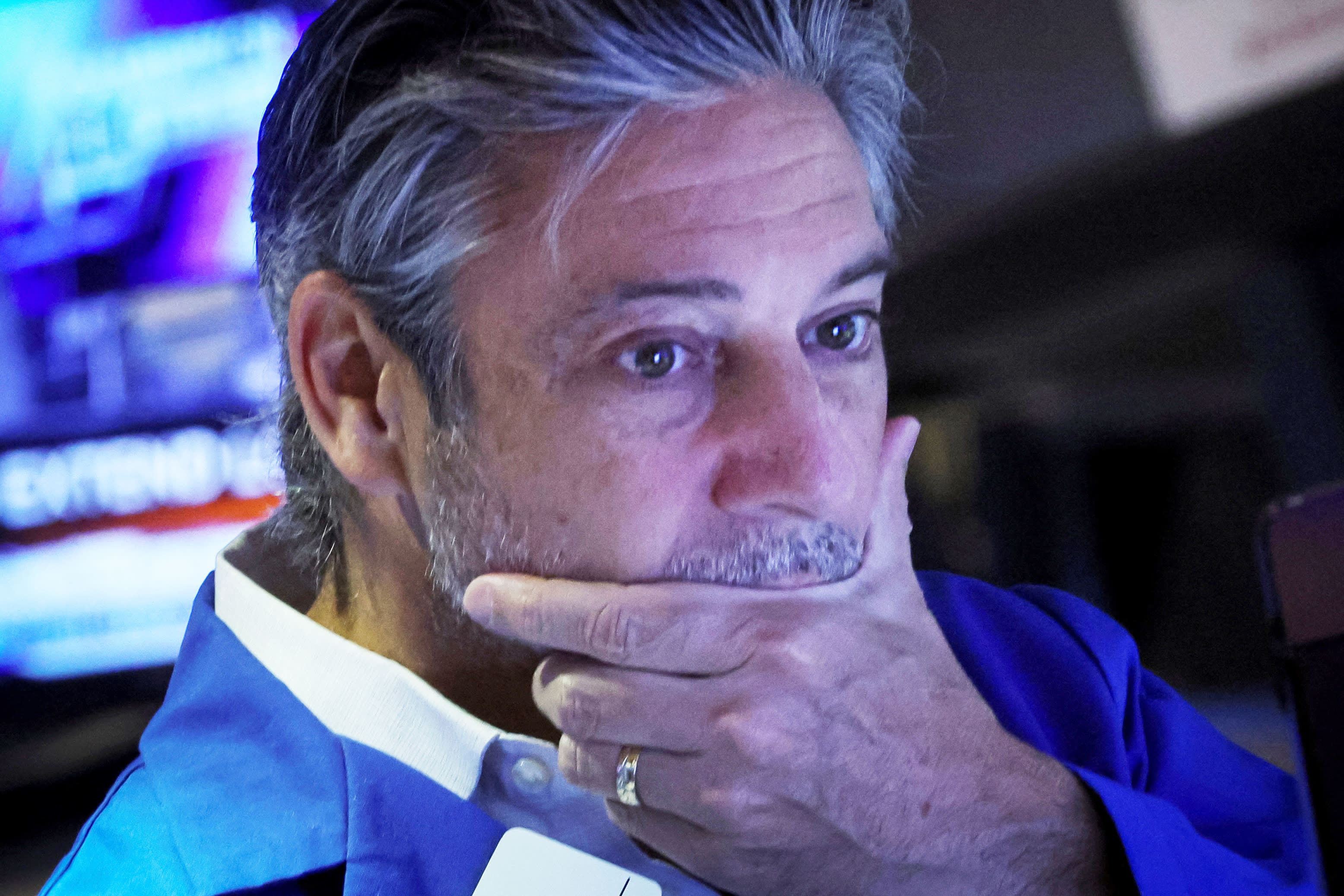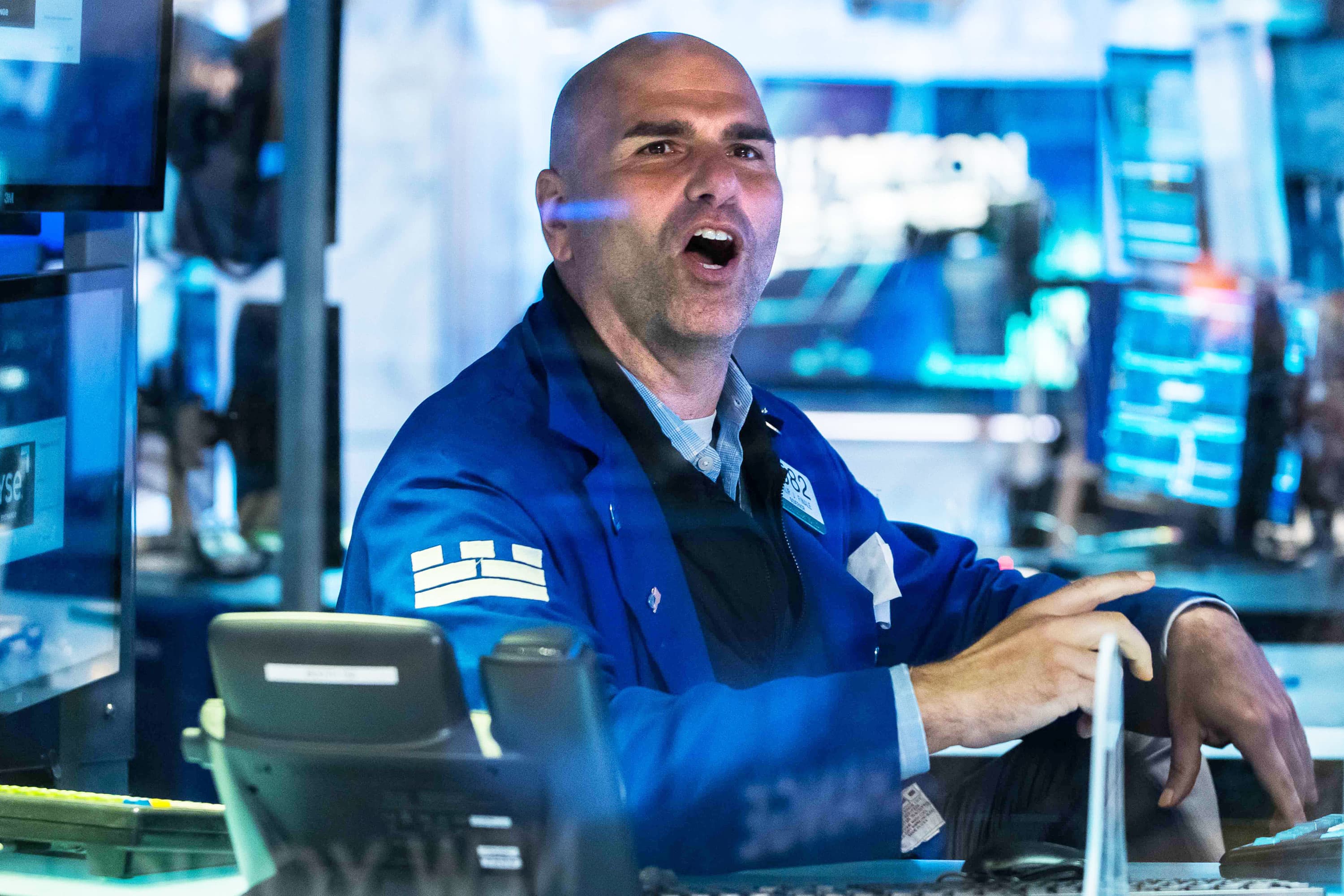From the Fed to Europe’s currency crisis, here’s what’s behind this selloff in financial markets

Stocks fell sharply, bond yields rose and the dollar strengthened Friday as investors heeded the Federal Reserve’s signal that its battle with inflation could result in much higher interest rates and a recession.
The sell-off Friday was global, in a week where the Fed boosted rates by another three-quarters of a point and other central banks raised their own interest rates to combat global inflation trends.
related investing news
The S&P 500 closed down 1.7% at 3,693 Friday, after it dipped temporarily to 3,647, below its June closing low of 3,666. The Dow Jones Industrial Average ended the turbulent Friday session at 29,890, a 486-point loss and a new low for the year.
European markets were down more, with the U.K. FTSE and German DAX both closing down about 2%, and French CAC off 2.3%.
Loading chart…
Weak PMI data on manufacturing and services from Europe Friday, and the Bank of England’s warning Thursday the country was already in recession added to the negative spiral. The U.K. government also shook markets Friday with the announcement of a plan for sweeping tax cuts and investment incentives to help its economy.
Fed ‘endorsing’ a recession
Stocks took on an even more negative tone earlier this week, after the Fed raised interest rates Wednesday by three-quarters of a point and forecast it could raise its funds rate to a high 4.6% by early next year. That rate is now 3% to 3.25% now.
“Inflation and rising rates are not a U.S. phenomena. That’s been a challenge for global markets as well,” said Michael Arone, chief investment strategist at State Street Global Advisors. “It’s clear the economy is slowing yet inflation is ramping and the central bank is compelled to address it. Pivot to Europe, the ECB [European Central Bank] is raising rates from negative to something positive at a time when they have an energy crisis and a war in their backyard.”
The Fed also forecast unemployment could rise to 4.4% next year, from 3.7%. Fed Chairman Jerome Powell steadfastly warned the Fed will do what it needs to do to crush inflation.
“By basically endorsing the idea of a recession, Powell set off the emotional phase of the bear market,” said Julian Emanuel, head of equity, derivatives and quantitative strategy at Evercore ISI. “The bad news is you are seeing and you will continue to see it in the near term in indiscriminate selling of virtually every asset. The good news is that tends to be that the end game of virtually every bear market we’ve ever witnessed, and it’s coming in September and October, where that has historically been the normal state of affairs.”
Recession worries also sent the commodities complex lower, with metals and agricultural commodities all selling off across the board. West Texas Intermediate oil futures fell about 6% to just above $78 per barrel, the lowest price since early January.
Europe, Pound impact
As the U.S. stock market opened, Treasury yields were off their highs and other sovereign rates eased as well. The U.K. government’s announcement of a sweeping plan to cut taxes added to turbulence in that country’s debt and hit British sterling hard. The 2-year British Gilt was yielding 3.95%, a rate that was at 1.71% at the start of August. The U.S. 2-year Treasury was at 4.19%, off a high above 4.25%. Bond yields move opposite price.
“European bonds, while they’re down, are bouncing, but U.K. gilts are still a disaster,” said Peter Boockvar, chief investment officer at Bleakley Advisory Group. “I feel like this morning might have been, for the short-term, a capitulation in bonds. But we’ll see. Equity guys are obviously still very nervous and the dollar is still at the highs of the day.”
The Dollar index, largely influenced by the euro hit a new 20-year high and was up 1.4% at 112.96, while the euro sank to $0.9696 per dollar.
Arone said other factors are at play as well globally. “China through their Covid strategy and common prosperity has slowed down economic growth,” said Arone. “They have been slow to introduce easy monetary policy or additional fiscal spending at this point.”
Arone said around the globe, the common threads are slowing economies and high inflation with central banks engaged to curb high prices. Central banks are also hiking rates at the same time they are ending bond purchasing programs.
Strategists say the U.S. central bank particularly rattled markets by forecasting a new higher interest rate forecast, for the level where it believes it will stop hiking. The Fed’s projected 4.6% high water rate for next year is considered to be its “terminal rate,” or end rate. Yet, strategists still see that as fluid until the course of inflation is clear, and fed funds futures for early next year were racing above that level, to 4.7% Friday morning.
“Until we get a picture where interest rates come off and inflation begins to come down, until that happens expect more volatility ahead,” said Arone. “The fact the Fed does not know where they’re going to end up is an uncomfortable place for investors.”
Watching for signs of market stress
Boockvar said the market moves are painful because the central banks are unwinding years of easy money, from even before the pandemic. He said interest rates were suppressed by global central banks since the financial crisis, and until recently, rates in Europe were negative.
“All these central banks have been sitting on a beach ball in a pool these last 10 years,” he said. “Now they’re getting off the ball and it’s going to bounce pretty high. What’s happening is developing markets currencies and debt are trading like emerging markets.”
Marc Chandler, chief market strategist at Bannockburn Global Forex, said he thinks markets are beginning to price in a higher terminal rate for the Fed, to as high as 5%. “I would say the forces were unleashed by the Fed encouraging the market to reprice the terminal rate. That was definitely one of the factors that unleashed this volatility,” he said.
A higher terminal rate should continue to support the dollar against other currencies.
“The bottom line is despite our problems here in the U.S., the Fed revising down GDP this year to 0.2%, the stagnation, we still look like the better bet when you look at the alternatives,” said Chandler.
Strategists said they see no specific signs, but they are monitoring markets for any signs of stress, particularly in Europe where rate moves have been dramatic.
“This is like the quote from Warren Buffett. When the tide goes out, you see who is not wearing a swimming suit,” said Chandler. “There are places that have benefited from low rates for a long time. You don’t know about them until the tide recedes and the rocks show up.”
This post has been syndicated from a third-party source. View the original article here.






